Humanities/Arts Exam > Humanities/Arts Notes > Geography Class 11 > Revision Notes: Landforms & their Evolution - 2
Landforms & their Evolution - 2 Class 11 Geography
| Table of contents |

|
| Erosional Landforms |

|
| Depositional Landforms |

|
| Low Sedimentary Coasts |

|
| Eroisonal Landforms |

|
Erosional Landforms
Erosional Landforms
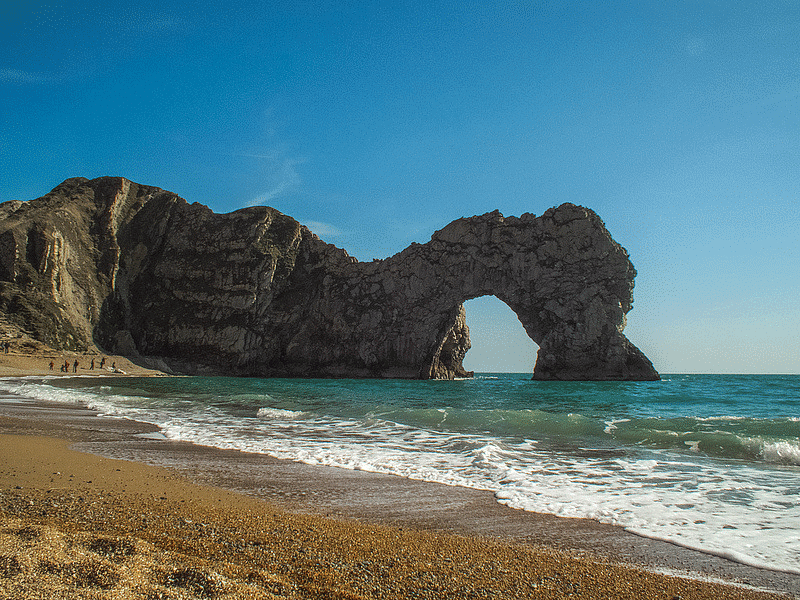
Cirque
- Cirques are the most common of landforms in glaciated mountains. The cirques quite often are found at the heads of glacial valleys.
- The accumulated ice cuts these cirques while moving down the mountain tops. They are deep, long and wide troughs or basins with very steep concave to vertically dropping high walls at its head as well as sides.
- A lake of water can be seen quite often within the cirques after the glacier disappears.
- Such lakes are called cirque or tarn lakes. There can be two or more cirques one leading into another down below in a stepped sequence.
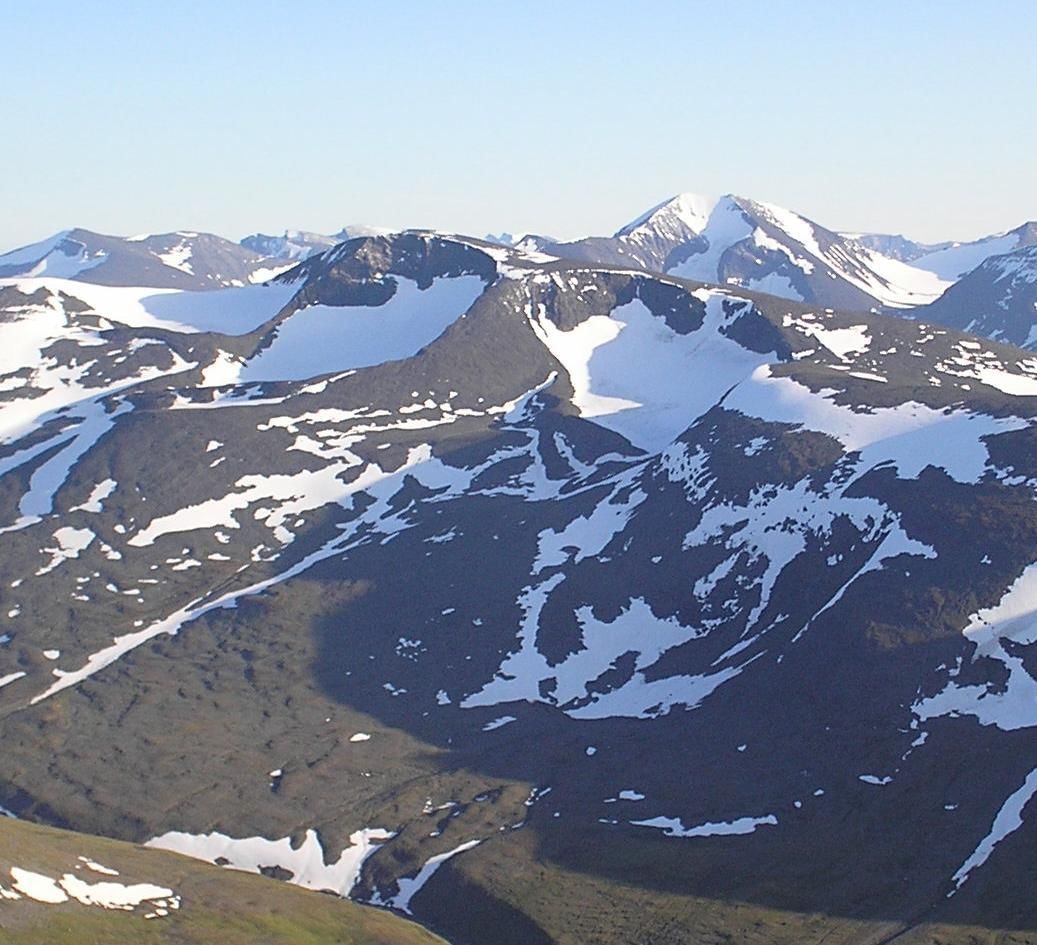 Cirque
Cirque
Horns and Serrated Ridges
- Horns form through head ward erosion of the cirque walls.
- If three or more radiating glaciers cut headward until their cirques meet, high, sharp pointed and steep sided peaks called horns form.
- The divides between cirque side walls or head walls get narrow because of progressive erosion and turn into serrated or saw-toothed ridges sometimes referred to as arêtes with very sharp crest and a zig-zag outline.
- The highest peak in the Alps, Matterhorn and the highest peak in the Himalayas, Everest are in fact horns formed through headward erosion of radiating cirques.
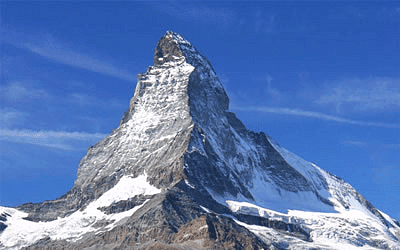
Glacial Valleys/Troughs
- Glaciated valleys are trough-like and U-shaped with broad floors and relatively smooth, and steep sides.
- The valleys may contain littered debris or debris shaped as moraines with swampy appearance.
- There can be hanging valleys at an elevation on one or both sides of the main glacial valley. The faces of divides or spurs of such hanging valleys opening into main glacial valleys are quite often truncated to give them an appearance like triangular facets.
- Very deep glacial troughs filled with sea water and making up shorelines (in high latitudes) are called fjords/fiords.
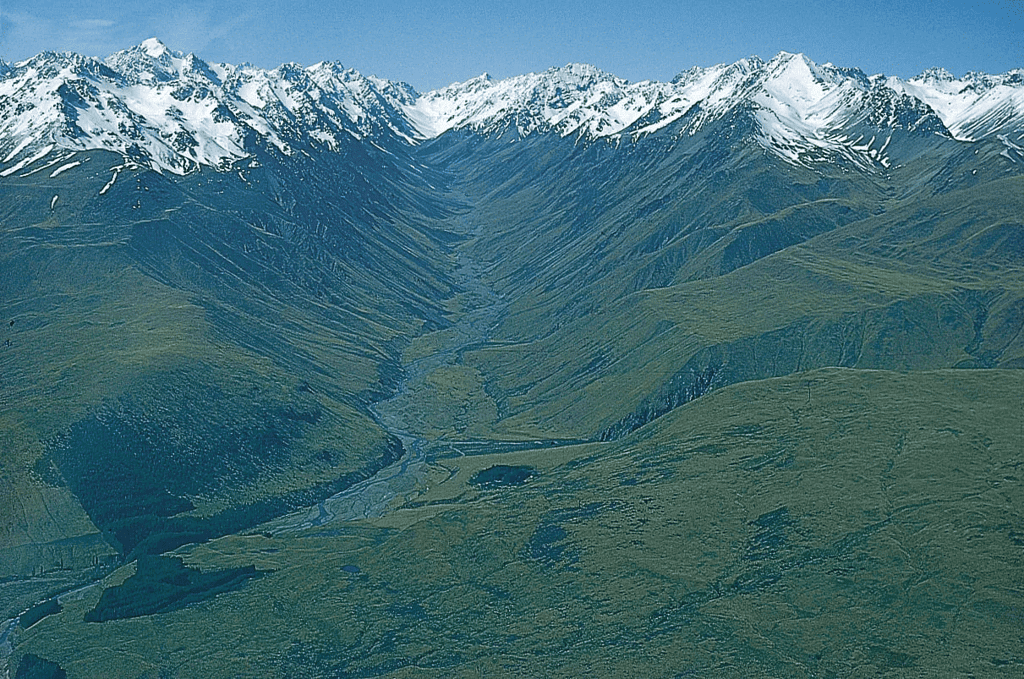
Depositional Landforms
- The unassorted coarse and fine debris dropped by the melting glaciers is called glacial till.
- Most of the rock fragments in till are angular to sub- angular in form. Streams form by melting ice at the bottom, sides or lower ends of glaciers.
- Some amount of rock debris small enough to be carried by such melt-water streams is washed down and deposited. Such glacio- fluvial deposits are called outwash deposits.
- Unlike till deposits, the outwash deposits are roughly stratified and assorted. The rock fragments in outwash deposits are somewhat rounded at their edges.
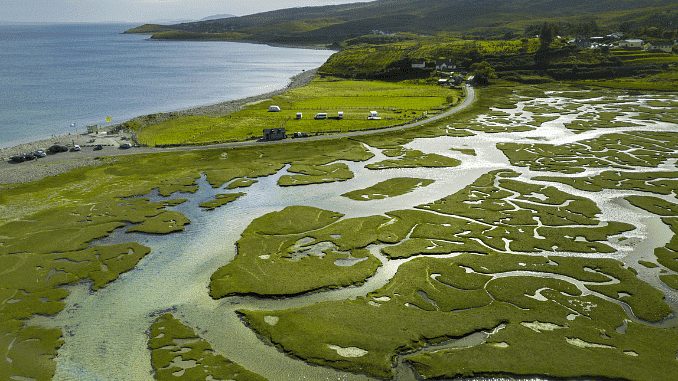
Question for Revision Notes: Landforms & their Evolution - 2Try yourself:Deflation and abrasion activities are associated with
View Solution
Moraines
- These are are long ridges of deposits of glacial till.
- Terminal moraines are long ridges of debris deposited at the end (toe) of the glaciers.
- Lateral moraines form along the sides parallel to the glacial valleys. The lateral moraines may join a terminal moraine forming a horse-shoe shaped ridge. There can be many lateral moraines on either side in a glacial valley.
- Many valley glaciers retreating rapidly leave an irregular sheet of till over their valley floors. Such deposits varying greatly in thickness and in surface topography are called ground moraines.
- The moraine in the centre of the glacial valley flanked by lateral moraines is called medial moraine.

Eskers
- When glaciers melt in summer, the water flows on the surface of the ice or seeps down along the margins or even moves through holes in the ice.
- These waters accumulate beneath the glacier and flow like streams in a channel beneath the ice.
- Such streams flow over the ground (not in a valley cut in the ground) with ice forming its banks.
- Very coarse materials like boulders and blocks along with some minor fractions of rock debris carried into this stream settle in the valley of ice beneath the glacier and after the ice melts can be found as a sinuous ridge called esker.
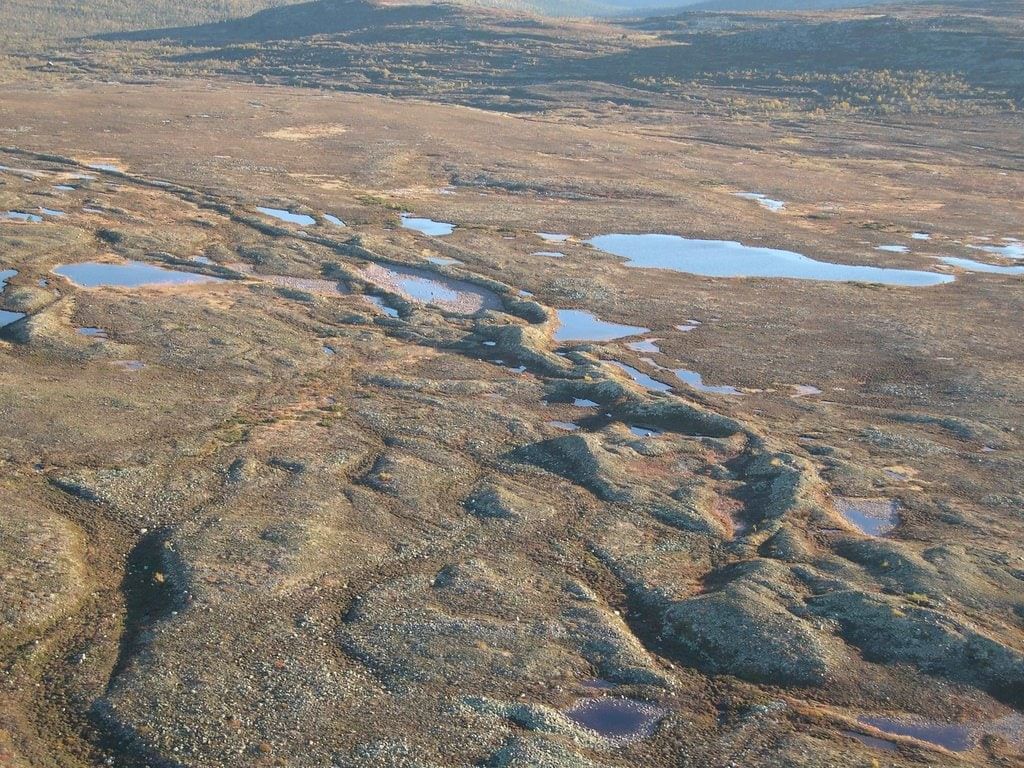
Outwash Plains
- The plains at the foot of the glacial mountains or beyond the limits of continental ice sheets are covered with glacio-fluvial deposits in the form of broad flat alluvial fans which may join to form outwash plains of gravel, silt, sand and clay.
Drumlins
- Drumlins are smooth oval shaped ridge-like features composed mainly of glacial till with some masses of gravel and sand.
- The long axes of drumlins are parallel to the direction of ice movement.
- They may measure up to 1 km in length and 30 m or so in height.
- One end of the drumlins facing the glacier called the stoss end is blunter and steeper than the other end called tail.
- The drumlins form due to dumping of rock debris beneath heavily loaded ice through fissures in the glacier. The stoss end gets blunted due to pushing by moving ice.
- Drumlins give an indication of direction of glacier movement.
Waves and Currents
- When waves break, the water is thrown with great force onto the shore, and simultaneously, there is a great churning of sediments on the sea bottom.
- Constant impact of breaking waves drastically affects the coasts. Storm waves and tsunami waves can cause far-reaching changes in a short period of time than normal breaking waves. As wave environment changes, the intensity of the force of breaking waves changes.
- Other than the action of waves, the coastal landforms depend upon:
- the configuration of land and sea floor;
- whether the coast is advancing (emerging) seaward or retreating (submerging) landward.
- Assuming sea level to be constant, two types of coasts are considered to explain the concept of evolution of coastal landforms:
- high, rocky coasts (submerged coasts);
- low, smooth and gently sloping sedimentary coasts (emerged coasts).
High Rocky Coasts
- Along the high rocky coasts, the rivers appear to have been drowned with highly irregular coastline.
The coastline appears highly indented with extension of water into the land where glacial valleys (fjords) are present. - The hill sides drop off sharply into the water. Shores do not show any depositional landforms initially.
- Erosion features dominate along high rocky coasts, waves break with great force against the land shaping the hill sides into cliffs.
- With constant pounding by waves, the cliffs recede leaving a wave-cut platform in front of the sea cliff. Waves gradually minimise the irregularities along the shore.
- Bars are submerged features and when bars show up above water, they are called barrier bars.
- Barrier bar which get keyed up to the headland of a bay is called a spit.
- When barrier bars and spits form at the mouth of a bay and block it, a lagoon forms. The lagoons would gradually get filled up by sediments from the land giving rise to a coastal plain.
Low Sedimentary Coasts
- Along low sedimentary coasts the rivers appear to extend their length by building coastal plains and deltas. The coastline appears smooth with occasional incursions of water in the form of lagoons and tidal creeks.
- The land slopes gently into the water. Marshes and swamps may abound along the coasts.
- When waves break over a gently slopingsedimentary coast, the bottom sediments get churned and move readily building bars, barrier bars, spits and lagoons.
- Lagoons would eventually turn into a swamp which would subsequently turn into a coastal plain.
- The west coast of our country is a high rocky retreating coast. Erosional forms dominate in the west coast.
- The east coast of India is a low sedimentary coast. Depositional forms dominate in the east coast.
Question for Revision Notes: Landforms & their Evolution - 2Try yourself: What are cirques?View Solution
Eroisonal Landforms
Cliffs, Terraces, Caves and Stacks
- Wave-cut cliffs and terraces are two forms usually found where erosion is the dominant shore process.
- Almost all sea cliffs are steep and may range from a few metre to 30 metre or even more. At the foot of such cliffs there may be a flat or gently sloping platform covered by rock debris derived from the sea cliff behind.
- Such platforms occurring at elevations above the average height of waves is called a wave-cut terrace.
- The lashing of waves against the base of the cliff and the rock debris that gets smashed against the cliff along with lashing waves create hollows and these hollows get widened and deepened to form sea caves.
- The roofs of caves collapse and the sea cliffs recede further inland. Retreat of the cliff may leave some remnants of rock standing isolated as small islands just off the shore. Such resistant masses of rock, originally parts of a cliff or hill are called sea stacks.
Depositional Landforms
Beaches and Dunes
- Beaches are characteristic of shorelines that are dominated by deposition, but may occur as patches along even the rugged shores.
- Most of the sediment making up the beaches comes from land carried by the streams and rivers or from wave erosion. Beaches are temporary features.
- Most of the beaches are made up of sand sized materials. Beaches called shingle beaches contain excessively small pebbles and even cobbles.
- Just behind the beach, the sands lifted and winnowed from over the beach surfaces will be deposited as sand dunes. Sand dunes forming long ridges parallel to the coastline are very common along low sedimentary coasts.
Bars, Barriers and Spits
- A ridge of sand and shingle formed in the sea in the off-shore zone (from the position of low tide waterline to seaward) lying approximately parallel to the coast is called an off-shore bar.
- An off-shore bar which is exposed due to further addition of sand is termed a barrier bar.
- The off-shore bars and barriers commonly form across the mouth of a river or at the entrance of a bay. Sometimes such barrier bars get keyed up to one end of the bay when they are called spits. Spits may also develop attached to headlands/hills. The barriers, bars and spits at the mouth of the bay gradually extend leaving only a small opening of the bay into the sea and the bay will eventually develop into a lagoon.
- The lagoons get filled up gradually by sediment coming from the land or from the beach itself (aided by wind) and a broad and wide coastal plain may develop replacing a lagoon.
- The coastal off-shore bars offer the first buffer or defence against storm or tsunami by absorbing most of their destructive force. Then come the barriers, beaches, beach dunes and mangroves, if any, to absorb the destructive force of storm and tsunami waves. So, if we do anything which disturbs the ‘sediment budget’ and the mangroves along the coast, these coastal forms will get eroded away leaving human habitations to bear first strike of storm and tsunami waves.
Winds
- Wind is one of the two dominant agents in hot deserts. The desert floors get heated up too much and too quickly because of being dry and barren.
- The heated floors heat up the air directly above them and result in upward movements in the hot lighter air with turbulence, and any obstructions in its path sets up eddies, whirlwinds, updrafts and downdrafts.
- Winds also move along the desert floors with great speed and the obstructions in their path create turbulence. Of course, there are storm winds which are very destructive.
- Winds cause deflation, abrasion and impact.
- Deflation includes lifting and removal of dust and smaller particles from the surface of rocks. In the transportation process sand and silt act as effective tools to abrade the land surface.
- The impact is simply sheer force of momentum which occurs when sand is blown into or against a rock surface. It is similar to sand- blasting operation.
- The desert rocks devoid of vegetation, exposed to mechanical and chemical weathering processes due to drastic diurnal temperature changes, decay faster and the torrential rains help in removing the weathered materials easily.
- That means, the weathered debris in deserts is moved by not only wind but also by rain/sheet wash.
The wind moves fine materials and general mass erosion is accomplished mainly through sheet floods or sheet wash. Stream channels in desert areas are broad, smooth and indefinite and flow for a brief time after rains.
Question for Revision Notes: Landforms & their Evolution - 2Try yourself:The erosional land form consists of
View Solution
Erosional Landforms
Pediments and Pediplains
- Gently inclined rocky floors close to the mountains at their foot with or without a thin cover of debris, are called pediments.
- Such rocky floors form through the erosion of mountain front through a combination of lateral erosion by streams and sheet flooding.
- Once, pediments are formed with a steep wash slope followed by cliff or free face above it, thesteep wash slope and free face retreat backwards.
- This method of erosion is termed as parallel retreat of slopes through back wasting. So,
- through parallel retreat of slopes, the pediments extend backwards at the expense of mountain front, and gradually, the mountain gets reduced leaving an inselberg which is a remnant of the mountain.
- That’s how the high relief in desert areas is reduced to low featureless plains called pediplains.
Playas
- Plains are by far the most prominent landforms in the deserts. In basins with mountains and hills around and along, the drainage is towards the centre of the basin and due to gradual deposition of sediment from basin margins, a nearly level plain forms at the centre of the basin.
- In times of sufficient water, this plain is covered up by a shallow water body. Such types of shallow lakes are called as playas where water is retained only for short duration due to evaporation and quite often the playas contain good deposition of salts. The playa plain covered up by salts is called alkali flats.
Deflation Hollows and Caves
Deflation Hollows and Caves
- Weathered mantle from over the rocks or bare soil, gets blown out by persistent movement of wind currents in one direction. This process may create shallow depressions called deflation hollows.
- Deflation also creates numerous small pits or cavities over rock surfaces. The rock faces suffer impact and abrasion of wind-borne sand and first shallow depressions called blow outs are created, and some of the blow outs become deeper and wider fit to be called caves.
Mushroom, Table and Pedestal Rocks
- Many rock-outcrops in the deserts easily susceptible to wind deflation and abrasion are worn out quickly leaving some remnants of resistant rocks polished beautifully in the shape of mushroom with a slender stalk and a broad and rounded pear shaped cap above.
- Sometimes, the top surface is broad like a table top and quite often, the remnants stand out like pedestals.
Depositional Landforms
- Wind is a good sorting agent. Depending upon the velocity of wind, different sizes of grains are moved along the floors by rolling or saltation and carried in suspension and in this process of transportation itself, the materials get sorted.
- When the wind slows or begins to die down, depending upon sizes of grains and their critical velocities, the grains will begin to settle. So, in depositional landforms made by wind, good sorting of grains can be found.
- Wind is there everywhere and wherever there is good source of sand and with constant wind directions, depositional features in arid regions can develop anywhere.
Sand Dunes
- Dry hot deserts are good places for sand dune formation. Obstacles to initiate dune formation are equally important. There can be a great variety of dune forms.
- Crescent shaped dunes called barchans with the points or wings directed away from wind direction i.e., downwind, form where the wind direction is constant and moderate and where the original surface over which sand is moving is almost uniform.
- Parabolic dunes form when sandy surfaces are partially covered with vegetation. That means parabolic dunes are reversed barchans with wind direction being the same.
- Seif is similar to barchan with a small difference. Seif has only one wing or point. This happens when there is shift in wind conditions. The lone wings of seifs can grow very long and high.
- Longitudinal dunes form when supply of sand is poor and wind direction is constant. They appear as long ridges of considerable length but low in height.
- Transverse dunes are aligned perpendicular to wind direction. These dunes form when the wind direction is constant and the source of sand is an elongated feature at right angles to the wind direction. They may be very long and low in height.
Question for Revision Notes: Landforms & their Evolution - 2Try yourself:In which of the following regions the chemical weathering process is more dominant than the mechanical process?
View Solution
The document Landforms & their Evolution - 2 Class 11 Geography is a part of the Humanities/Arts Course Geography Class 11.
All you need of Humanities/Arts at this link: Humanities/Arts
|
70 videos|289 docs|44 tests
|
FAQs on Landforms & their Evolution - 2 Class 11 Geography
| 1. What are erosional landforms? |  |
Erosional landforms are geographical features created by the process of erosion, which is the gradual wearing away of the Earth's surface by natural forces such as wind, water, and ice. Examples of erosional landforms include canyons, valleys, cliffs, and caves.
| 2. How are depositional landforms formed? |  |
Depositional landforms are created when sediment is deposited by natural forces such as rivers, wind, or glaciers. As these forces transport sediment, they eventually lose energy and are unable to carry the sediment further, causing it to be deposited. Examples of depositional landforms include sand dunes, deltas, alluvial fans, and beaches.
| 3. What are low sedimentary coasts? |  |
Low sedimentary coasts are coastal areas that are characterized by a lack of substantial sediment supply. These coasts typically have minimal amounts of sediment being deposited and are often subject to erosion from wave action. They may have features such as rocky cliffs and narrow beaches.
| 4. How do erosional landforms evolve over time? |  |
Erosional landforms evolve over time through a combination of weathering and erosion processes. Weathering breaks down rocks into smaller particles, while erosion transports and removes these particles. Over time, this continuous process of weathering and erosion can reshape the landforms, making them larger or changing their appearance.
| 5. What are some examples of erosional landforms that can be found around the world? |  |
Examples of erosional landforms found around the world include the Grand Canyon in the United States, the Great Ocean Road in Australia, the Cliffs of Moher in Ireland, the Twelve Apostles in Australia, and the Zhangjiajie National Forest Park in China. These landforms showcase the power of erosion in shaping the Earth's surface.
Related Searches





















